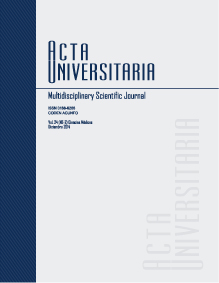Clinical and Pharmacotherapeutic Profile of patient with partial epilepsy of the National Institute of Pediatrics (NIP)
Published 2015-01-12
Keywords
- Epilepsia parcial,
- perfil clínico-terapéutico.
- Partial epilepsy,
- clinical and therapeutic profile.
How to Cite
Abstract
Epilepsy is a neurological disorder that manifests up to 60% in partial seizures. This neuropathy is highly prevalent in childhood and there is no actually data of clinical and therapeutically characteristics of the patients with partial epilepsy from the National Institute of Pediatrics. In this study the demographic, clinical and therapeutic characteristics of patients with INP partial epilepsy (1- Jan- 2010 to 31- Dec-2012) were described. A format and a database to collect, capture and data verification were designed. Of 149 epileptic patients, 80.9% had partial seizures, predominantly male (52%), of symptomatic etiology (52%), with hypoxia and preterm as medical history. 59.9% had abnormal psychomotor development. The prevailing therapy was monotherapy, and the most used drug alone and in combination valproic acid. The clinical and therapeutic profile of pediatric patients with partial epilepsy determines the needs of this population, those factors set parameters and prognostic association for better therapeutic management.

